Amarnath Sehgal was a man of many moods as evidenced by his fearless art centered on Partition. In his centenary year, a museum dedicated to him and a book trace his illustrious career
Amarnath Sehgal was a man of many moods as evidenced by his fearless art centered on Partition. In his centenary year, a museum dedicated to him and a book trace his illustrious career
The year was 1945. Unrest grew in the deepest trenches of then-undivided India as war chants echoed. Two years later, Amarnath Sehgal’s family made their way to the Kullu Valley, Himachal Pradesh, from Lahore in search of opportunities offered by an independent India.
Sehgal’s career, which spanned 60 years, after eventful detours through different continents finally culminates in the studio in Delhi where he worked and lived.
After over five years of renovation and archiving, the studio which opened its doors in 2019 as a museum gives visitors a glimpse of Sehgal not just as an artist, but also as a person. And now a book titled 100 years of Sehgal accompanies this effort, marking the artist’s centenary year.
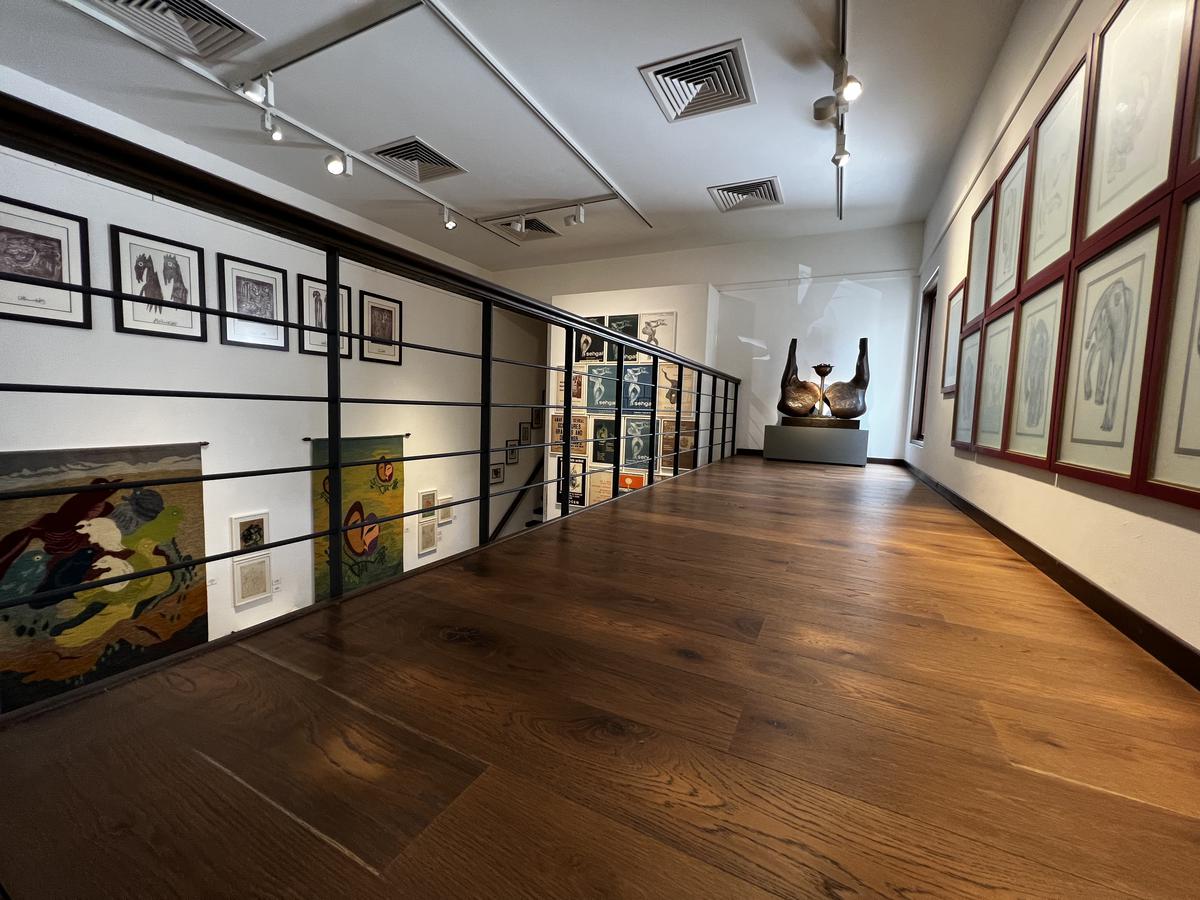
A view of the museum
| Photo Credit: special arrangement
When Mandira Row, the curator, was thrown into an already vast collection, diverse in both medium and context, she admits that she was overwhelmed. “I realised that this is one person’s whole life that has been encapsulated in a space. I decided that I need to know more about the man to understand his art. My research began on who this person really was.” The repository is still a work in progress. Over the course of their work, the team has realised that a lot of Sehgal’s pieces in the country are spread over the Delhi-NCR region. “We are still finding them,” says Mandira.
Amarnath Sehgal was a man who wore his heart on his sleeve: holed up in his studio he would try to make sense of the rejections he faced. And through art, he nursed the wounds he bore from the horrors of the Partition.
Be it through distorted faces that meld into a poignant mass of screams, stick figures with their hands held up in protest or reverberating sound waves frozen in motion, the artist did not hesitate to bare his mind. His direct translation of emotions into tangible mediums like bronze leave visitors with a powerful impression of the man, even more than the artist.
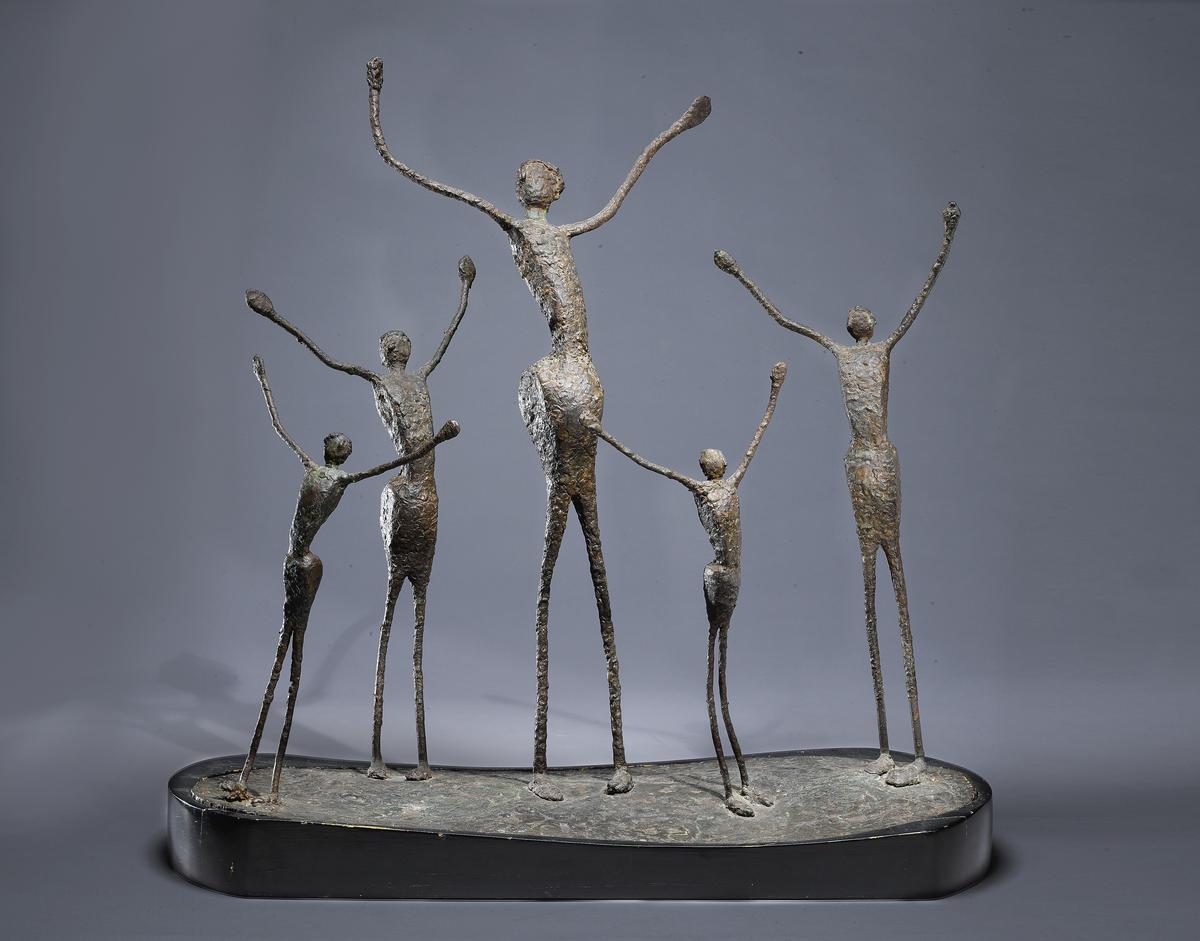
Uprising (1957)
| Photo Credit: SPECIAL ARRANGEMENT
Where he inhabits
Sehgal was born into a large family in 1922’s Campbellpur in the Attock district of present-day Pakistan. Though a student of Engineering with an inclination towards physics, his love for the arts made him enroll in the Mayo School of Art of pre-Partition Pakistan and later find comfort in the ideological space that BC Sanyal (also his mentor) had created: the Lahore School of Art.
Getting to know him was not too difficult, says Mandira, adding, “He put out all his emotions into his sculptures, his feelings into his letters and frustrations into his drawings. Through the process, I came to realise that he was a compassionate man, who was in fact too sensitive for a world like ours. But his sensitivity also made him fearless in expressing himself. You can see the drastic change in his art before and after Partition.”
Mandira started with his letters, correspondence and poetry, some of which were still drafts. Sehgal’s son, Rajan Sehgal, captures it well, “My father was like a kabadiwala who never threw away even a single piece of paper. We already had such a rich archive.”
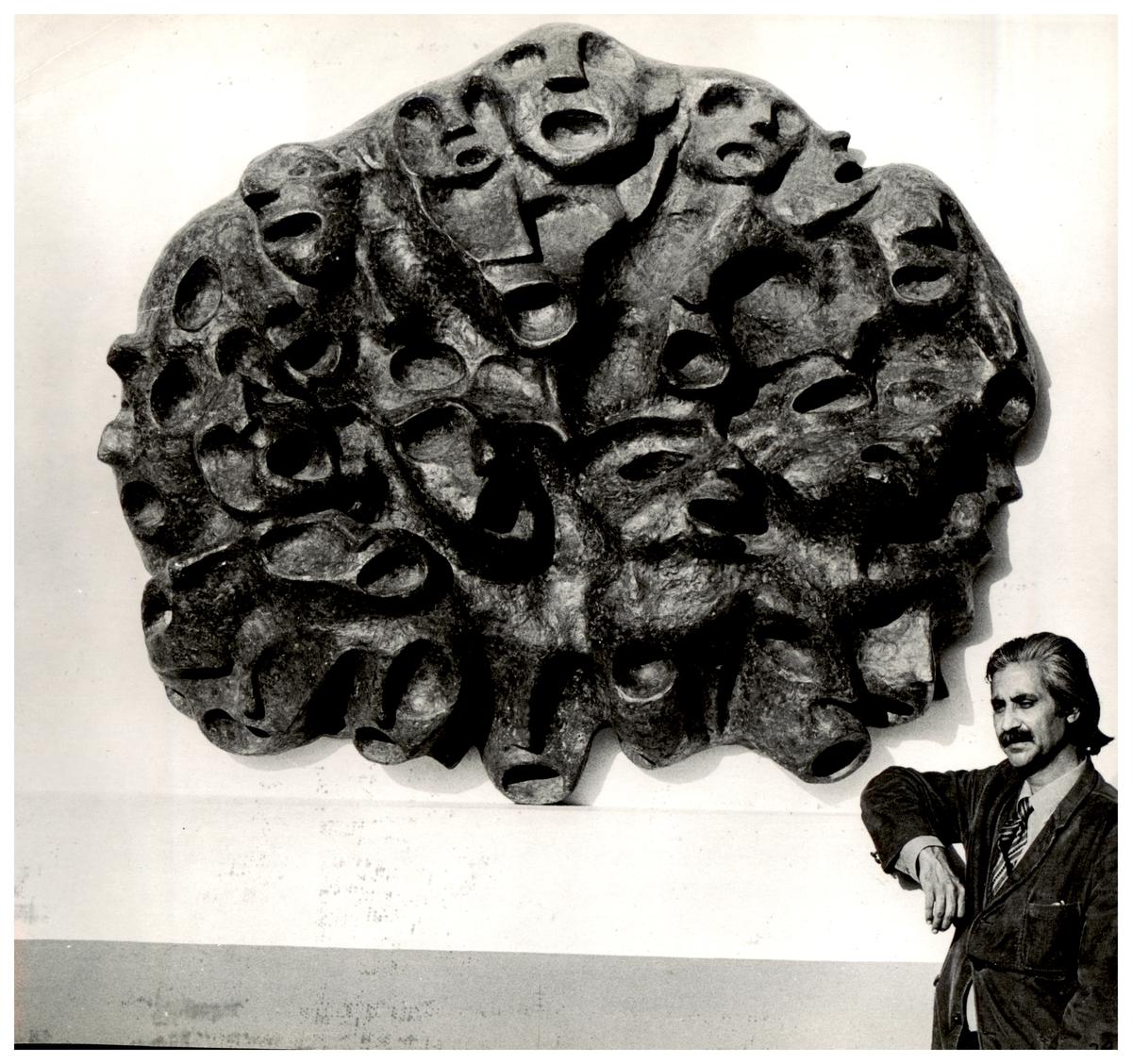
Sehgal with one of his most celebrated works, Anguished Cries (1971)
| Photo Credit: SPECIAL ARRANGEMENT
As his work indicates, Sehgal was deeply affected by the wrongdoings in the world — be it wars, communal riots, religious disparities or atrocities against women — and never shied away from voicing his opinions. Anguished Cries, one of his most celebrated sculptures (1971) is a jolting amalgam of screaming faces.
At the time, while most of his contemporaries stuck to conventional frames of landscapes and sceneries, Sehgal captured agony, pain and reform in his creations; knowingly or unknowingly, a subtle message lay hidden in each work. This is perhaps why he found a safer, encouraging space outside India in New York, where he went on a scholarship, and then in his studio in Luxembourg.
“In his unpublished memoir, he writes that his faculty in New York was impressed by how well behaved he was. He brought with him the concept of ‘guru – shishya’ which led his faculty to lend him studios to work in,” says Mandira. He was in the East Village which back then (post- Second World War America) was host to a young yet thriving art community. He met Tony Smith there. He and Smith, both broke, would share a cup of tea and take up multiple jobs. At that time, artists and contemporaries like Smith, [Jackson] Pollock and [Barnett] Newman used to help each other by lending studios.”
It was here that Sehgal opened his eyes to expressionism and abstraction, by breaking out of the shackles of the modern Bengal school of drawing. Pollock’s technique changed Sehgal’s view of public art, adds Mandira.
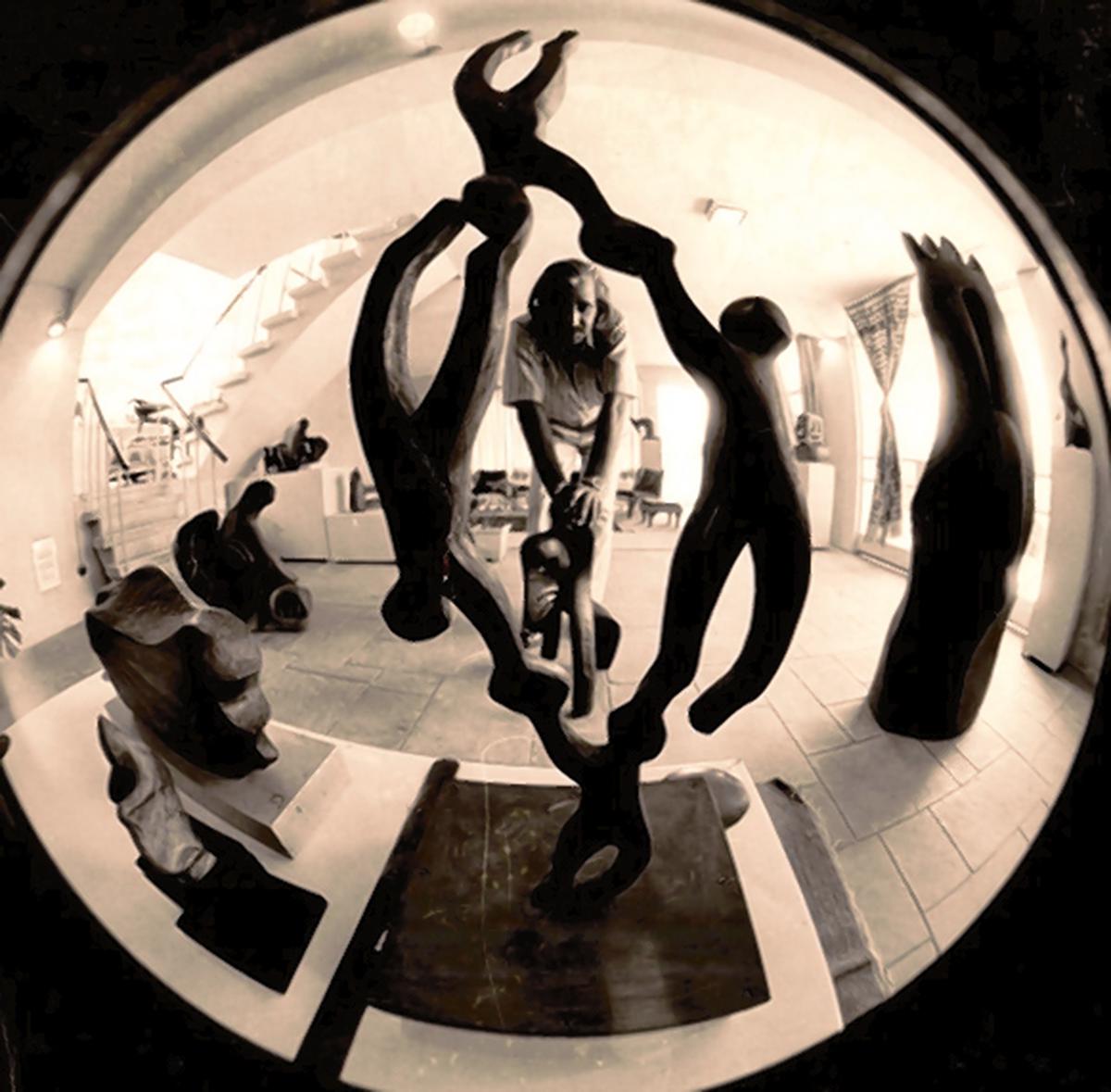
Sehgal in his studio
| Photo Credit: special arrangement
Sehgal, the father
Though fiercely expressive, Sehgal was a caring father. “When I was a kid, I remember doodling with him and playing with his tools. He never shooed me away.” Rajan continues, “Coming back from school, we would see him change into his overalls and pyjamas and go back into the studio. Raman [Sehgal] and I were very aware that he was different. In retrospect, I got to know him more as an artist only in the last few years.” In the book, both reminisce on Sehgal, the studio and his relationship with Luxembourg.
Back in the museum located in Jangpura Extension, the physical display is divided into five levels with different vantage points as the artist intended. It sits on a plot of land gifted to Sehgal in 1964 by the then Prime Minister Pandit Jawaharlal Nehru, says Rajan. The main space has a high ceiling which was set keeping in mind the possibility of creating a large sculpture within the studio. Tapestries, woodcuts, one oil painting, different mediums of his sculptures, and paper works make appearances in this intricately designed space.
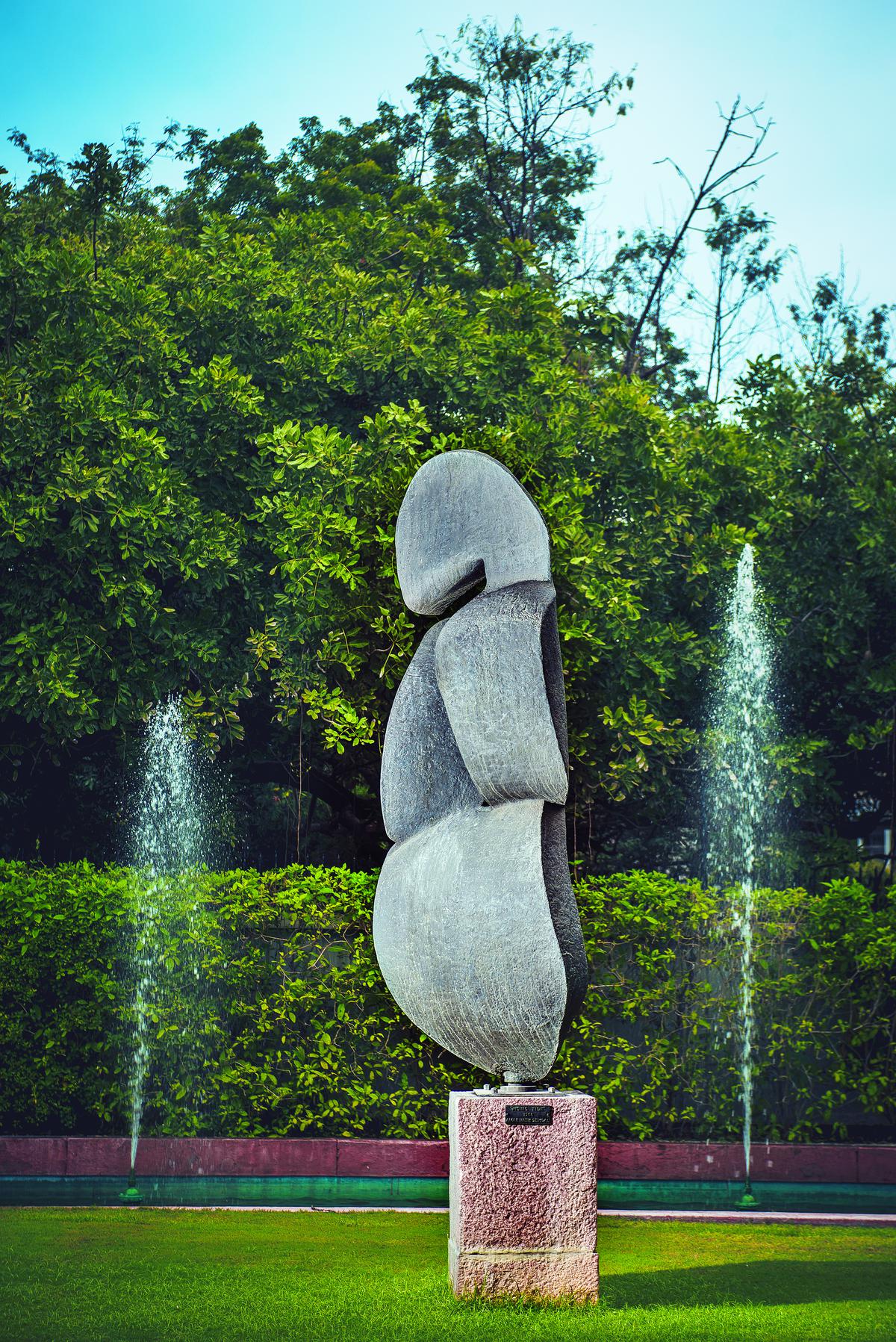
Sehgal’s Rising Tide at the Ford Foundation, New Delhi
| Photo Credit: Jaun Rizvi
Rajan says that towards the last few years of Sehgal’s life, the attention had shifted to the man from the studio. And as fate would have it, he breathed his last in this very studio on December 10, 2007.
Their intention is not to idolise him, Mandira adds. “I want people to know more about him. His is truly a life less known.”
Stay connected with us on social media platform for instant update click here to join our Twitter, & Facebook
We are now on Telegram. Click here to join our channel (@TechiUpdate) and stay updated with the latest Technology headlines.
For all the latest Entertainment News Click Here
For the latest news and updates, follow us on Google News.
